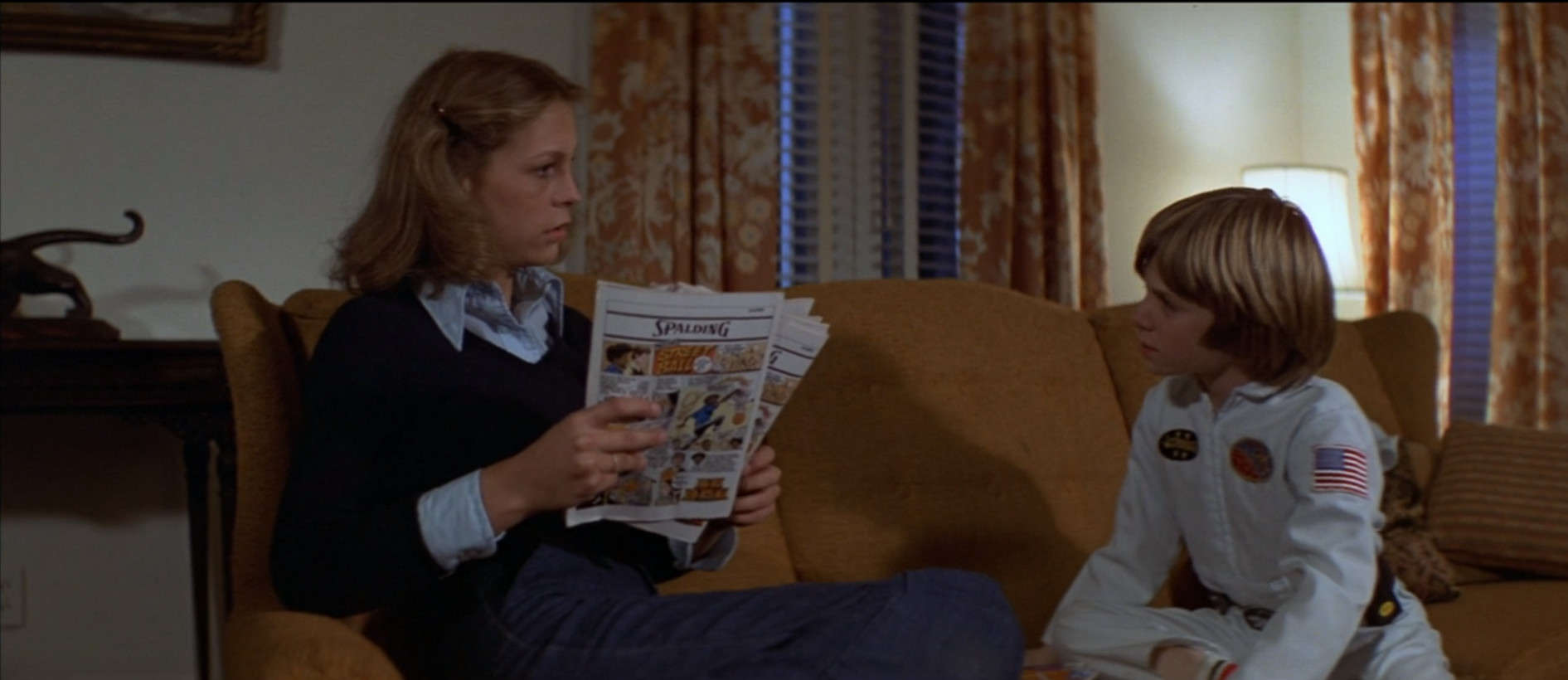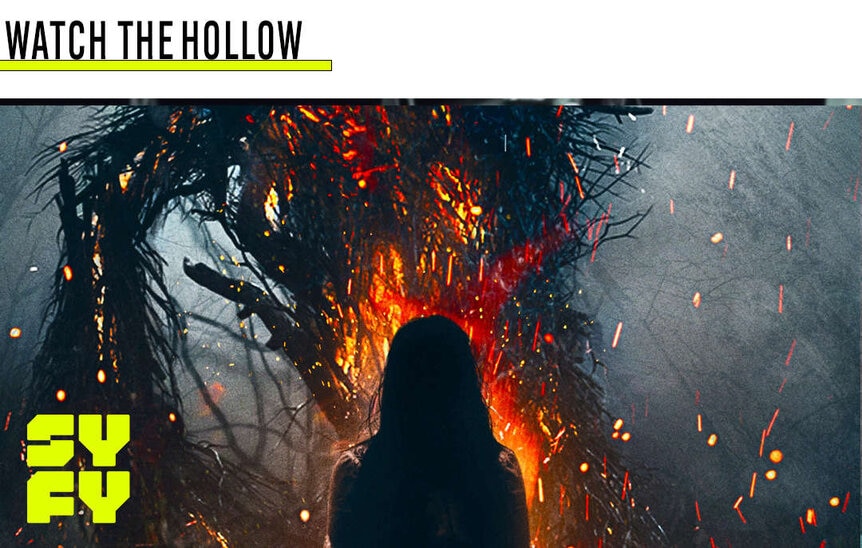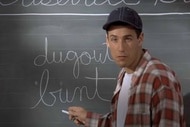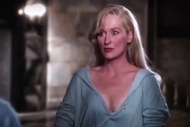Create a free profile to get unlimited access to exclusive videos, sweepstakes, and more!
What could the return of Tommy Doyle and Lindsey Wallace in 'Halloween Kills' mean for the sequel?

The first person Laurie Strode talks to in the original Halloween is her father, who gives her an errand to run and then disappears from the film entirely. The second person she talks to is a little boy named Tommy Doyle.
This year, Tommy will reappear in Halloween continuity with Halloween Kills, the sequel to 2018's Halloween, and he won't be alone. Anthony Michael Hall's version of Tommy (replacing Brian Andrews, who originated the role) will be joined by Kyle Richards, reprising her role as Lindsey Wallace; Nancy Stephens, reprising her role as Nurse Marion Chambers; Charles Cyphers, reprising his role as Sheriff Leigh Brackett; and Robert Longstreet as an older version of Lonnie Elam, one of the boys who bullied Tommy in the original film. The sequel continuity that began with the 2018 film is built on the idea of discarding previous sequels and creating a world in which Michael Myers has just started killing again after 40 years behind bars, yet each of these returning characters represents a reminder that the ripple effects of the damage he did on that Halloween night in 1978 are still felt throughout Haddonfield.
For Halloween fans, it's a treat to see all these characters rejoin Jamie Lee Curtis' Laurie, but I'm particularly interested in what David Gordon Green's Halloween Kills and this new continuity might do with the characters of Tommy and Lindsey, specifically. Even as children, they had a monumental impact on Halloween as a horror classic in the making.
It's telling that the first meaningful interaction Laurie has in Halloween is with Tommy, a boy who's excited about the holiday, wary of things like haunted houses, and enough of an outsider that he's bullied at school to a fairly significant degree. Though their lives seem rather different, Laurie and Tommy share a lot — she's a bit of an outsider too, despite her circle of friends — and as they head into the horrors of the film, their shared excitement about Halloween and its simple comforts points toward a sense of innocence that will soon be cut away from them by the edge of a knife.
Later, when Laurie arrives at the Doyle house to babysit Tommy for the night, we get an even deeper sense of who this kid is, and perhaps why he's been the target of bullies. Tommy's at least a bit of a nerd, as the stack of comic books he keeps hidden under the couch suggests, and he's very interested in sci-fi stories of heroes and monsters. But it's not just simple fandom. There's an earnestness to the way Tommy views the world, which comes out as he asks Laurie about the Boogeyman, the mysterious figure Tommy's bullies (including Lonnie, who we'll meet again in Halloween Kills) taunted him over at school. Laurie responds by appealing to Tommy's sense of fictional continuity and setting a series of rules for the Boogeyman. He can only come on Halloween night, and Laurie is with Tommy, therefore Tommy is safe. It makes sense at the time, and later it will veer into the realm of prophecy.
We learn considerably less about Lindsey Wallace, the kid across the street who's cared for by Laurie's friend Annie (Nancy Loomis), but we get enough from context clues to see that she is in many ways as laid back as Tommy is high strung. She sits watching horror movies in her house, glued to the TV, barely even able to pull herself away to answer the phone, and when she joins Tommy and Laurie later in the night she's at least invested enough in the idea of the Boogeyman to be scared when Tommy spots Michael across the street and starts screaming. Still, until the actual horror begins to unfold right in front of her, Lindsey seems like more of a passive participant in the lore of the Boogeyman than an active one. She might be susceptible to scares, but the mythology perhaps doesn't hit her as hard.
This all matters, because the kids and their understanding of the monster in the darkness are intrinsically tied to Laurie's own understanding of what happened that night in 1978. She begins the film at least a little haunted by the idea that someone is watching her, even as she tries to shrug it all off and cast herself as someone who "outgrew superstition." By tying her fate in the film to the fates of two little kids who definitely haven't outgrown superstition, writers John Carpenter and Debra Hill drive home their final point in an even more profound way: The Boogeyman is real, pure evil exists, and the rituals and make-believe of Halloween can't keep him out. It's a point so clear that by the end Laurie, the girl who "outgrew superstition," has come right back to declaring "It was the Boogeyman." She wouldn't have said that if not for the child's eye view of the terror she got from Tommy and Lindsey.
So, we've got a boy who believes in monsters and a girl who seems deeply absorbed in horror stories, who learn that monsters are both very real and very close over the course of a single Halloween night. Both kids saw Michael Myers in the flesh, and Lindsey Wallace had to go back home to a house that, at various points that night, had three fresh corpses in it, including her own babysitter's. With all that in mind, what does it mean for who they are by the time Halloween Kills rolls around?
For Laurie, who lost three of her best friends that night and got lifelong PTSD from her personal battle with Michael, it's meant decades of suffering, of not feeling listened to, of preparing for something everyone told her she was crazy for believing would happen. Do Tommy and Lindsey also fit that description? Have they been able to put that night behind them better than Laurie did? Has their youth allowed them to compartmentalize in a more effective way? Or do they swing in the other direction? Is their trauma even deeper because they were so young, so impressionable, so primed to believe?
I hope Halloween Kills answers these questions, but I also hope it digs even deeper into the wider blast radius of Michael's presence in the lives of all of these people. Laurie Strode, for all her suffering, is a hero as well as a final girl. She didn't just survive the night. She allowed two little children to survive too, which meant two fewer shattered families in Haddonfield, two fewer gravestones in the cemetery. But her act of heroism also meant two more people whose lives will be forever haunted by this strange, violent encounter with a faceless Shape. How Tommy and Lindsey have grappled with that in the 40 years since will be extremely telling, particularly as the opening act of Halloween Kills, and Michael's survival after the first sequel, seems primed to fulfill one of the great truths that Tommy Doyle speaks in the original 1978 classic:
"You can't kill the Boogeyman."
Halloween Kills premieres in theaters and on Peacock on Oct. 15.















